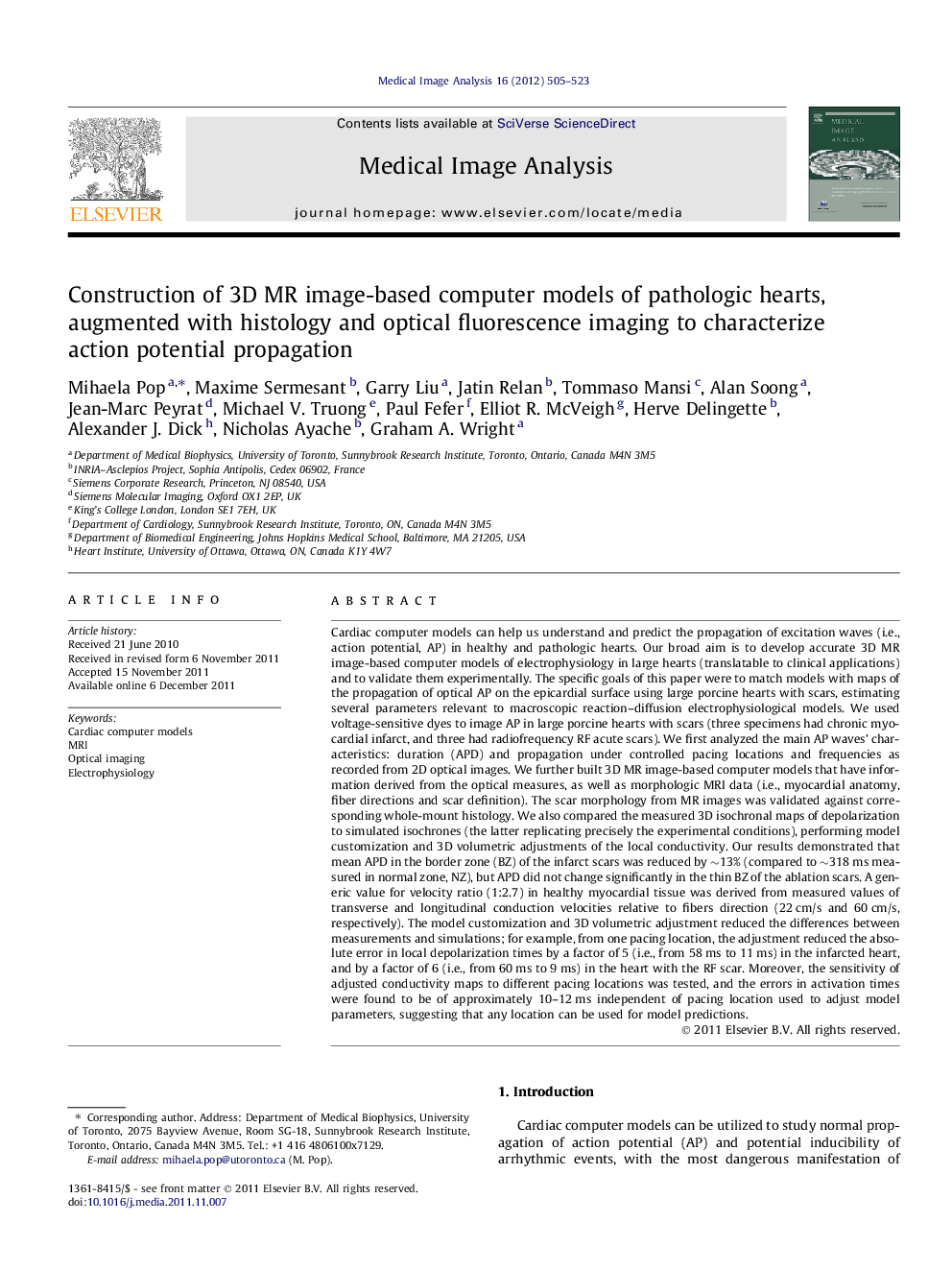| کد مقاله | کد نشریه | سال انتشار | مقاله انگلیسی | نسخه تمام متن |
|---|---|---|---|---|
| 445175 | 693149 | 2012 | 19 صفحه PDF | دانلود رایگان |

Cardiac computer models can help us understand and predict the propagation of excitation waves (i.e., action potential, AP) in healthy and pathologic hearts. Our broad aim is to develop accurate 3D MR image-based computer models of electrophysiology in large hearts (translatable to clinical applications) and to validate them experimentally. The specific goals of this paper were to match models with maps of the propagation of optical AP on the epicardial surface using large porcine hearts with scars, estimating several parameters relevant to macroscopic reaction–diffusion electrophysiological models. We used voltage-sensitive dyes to image AP in large porcine hearts with scars (three specimens had chronic myocardial infarct, and three had radiofrequency RF acute scars). We first analyzed the main AP waves’ characteristics: duration (APD) and propagation under controlled pacing locations and frequencies as recorded from 2D optical images. We further built 3D MR image-based computer models that have information derived from the optical measures, as well as morphologic MRI data (i.e., myocardial anatomy, fiber directions and scar definition). The scar morphology from MR images was validated against corresponding whole-mount histology. We also compared the measured 3D isochronal maps of depolarization to simulated isochrones (the latter replicating precisely the experimental conditions), performing model customization and 3D volumetric adjustments of the local conductivity. Our results demonstrated that mean APD in the border zone (BZ) of the infarct scars was reduced by ∼13% (compared to ∼318 ms measured in normal zone, NZ), but APD did not change significantly in the thin BZ of the ablation scars. A generic value for velocity ratio (1:2.7) in healthy myocardial tissue was derived from measured values of transverse and longitudinal conduction velocities relative to fibers direction (22 cm/s and 60 cm/s, respectively). The model customization and 3D volumetric adjustment reduced the differences between measurements and simulations; for example, from one pacing location, the adjustment reduced the absolute error in local depolarization times by a factor of 5 (i.e., from 58 ms to 11 ms) in the infarcted heart, and by a factor of 6 (i.e., from 60 ms to 9 ms) in the heart with the RF scar. Moreover, the sensitivity of adjusted conductivity maps to different pacing locations was tested, and the errors in activation times were found to be of approximately 10–12 ms independent of pacing location used to adjust model parameters, suggesting that any location can be used for model predictions.
Figure optionsDownload high-quality image (82 K)Download as PowerPoint slideHighlights
► Successful construction of 3D MRI-based models of pathologic pig hearts.
► 3D model accurately depicts anatomy, scar heterogeneity and fiber directions.
► Categorization of heterogeneous zones was validated using histology.
► Model parameterization used action potential waves from optical imaging.
Journal: Medical Image Analysis - Volume 16, Issue 2, February 2012, Pages 505–523